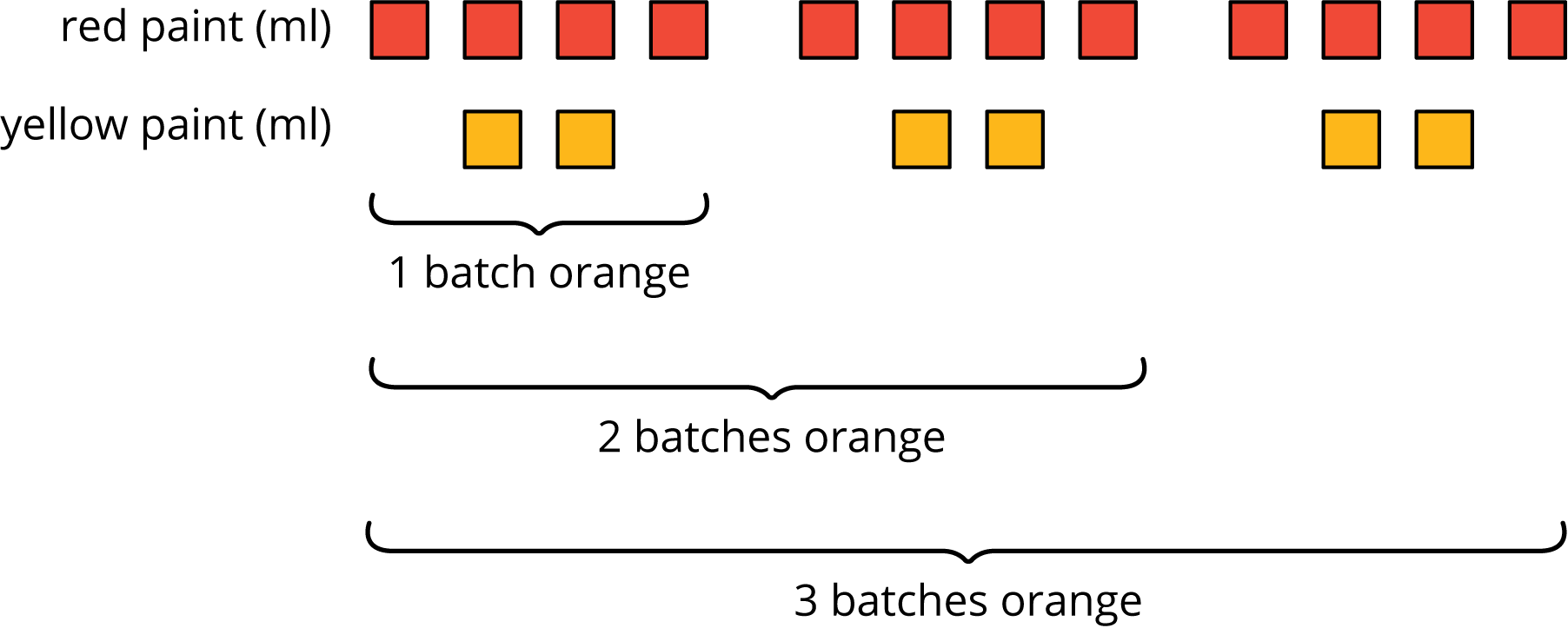4.1: Number Talk: Adjusting a Factor
Find the value of each product mentally.
6\boldcdot 15
12\boldcdot 15
6\boldcdot 45
13\boldcdot 45
Let’s see what color-mixing has to do with ratios.
Find the value of each product mentally.
6\boldcdot 15
12\boldcdot 15
6\boldcdot 45
13\boldcdot 45
In the left cylinder, mix 5 ml of blue and 15 ml of yellow. This is a single batch of green.
Suppose you have one batch of green but want to make more. Which of the following would produce the same shade of green?
If you're unsure, try creating the mixture in the right cylinder. Start with the amounts in a single batch (5 ml of blue and 15 ml of yellow) and . . .
For one of the mixtures that produces the same shade, write down the number of ml of blue and yellow used in the mixture.
For the same mixture that produces the same shade, draw a diagram of the mixture. Make sure your diagram shows the number of milliliters of blue, yellow, and the number of batches.
Someone was trying to make the same shade as the original single batch, but started by adding 20 ml of blue and 20 ml of yellow. How can they add more but still create the same shade of green?
Invent a recipe for a bluer shade of green. Write down the amounts of yellow and blue that you used, and draw a diagram. Explain how you know it will be bluer than the original single batch of green before testing it out.
Someone has made a shade of green by using 17 ml of blue and 13 ml of yellow. They are sure it cannot be turned into the original shade of green by adding more blue or yellow. Either explain how more can be added to create the original green shade, or explain why this is impossible.
The recipe for Perfect Purple Water says, “Mix 8 ml of blue water with 3 ml of red water.”
Jada mixes 24 ml of blue water with 9 ml of red water. Andre mixes 16 ml of blue water with 9 ml of red water.
When mixing colors, doubling or tripling the amount of each color will create the same shade of the mixed color. In fact, you can always multiply the amount of each color by the same number to create a different amount of the same mixed color.
For example, a batch of dark orange paint uses 4 ml of red paint and 2 ml of yellow paint.
Here is a diagram that represents 1, 2, and 3 batches of this recipe.

We say that the ratios 4:2, 8:4, and 12:6 are equivalent because they describe the same color mixture in different numbers of batches, and they make the same shade of orange.